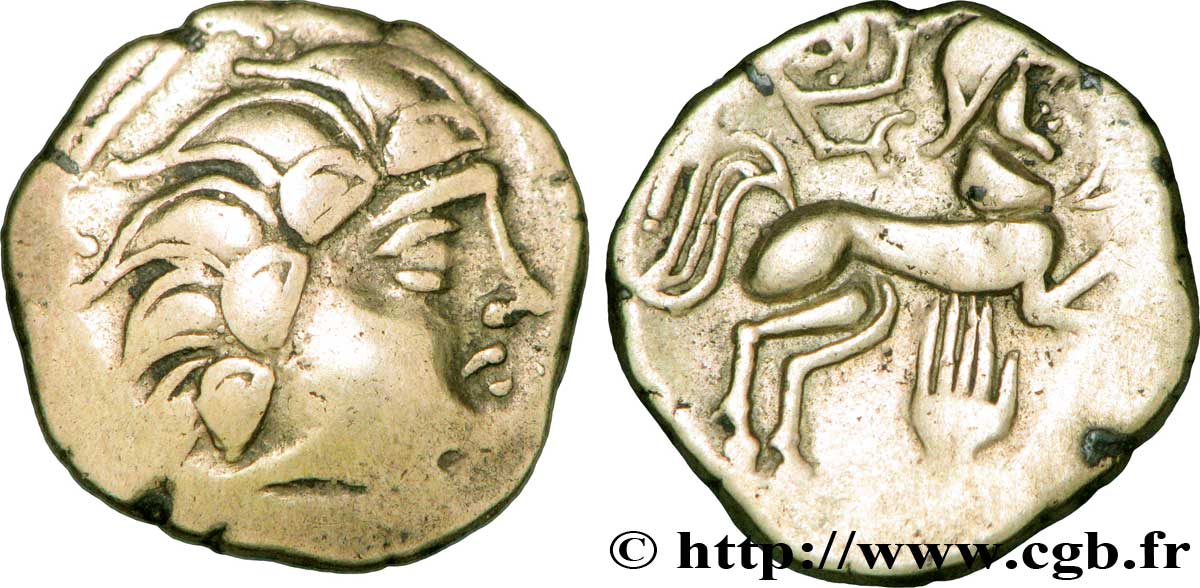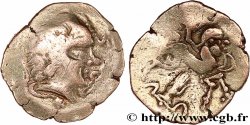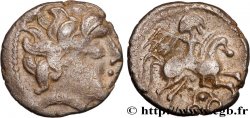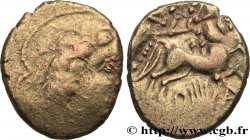v57_0410 - PICTONES (Area of Poitiers) Statère d’électrum à la main
MONNAIES 57 (2013)
Starting price : 500.00 €
Estimate : 800.00 €
Realised price : 790.00 €
Number of bids : 5
Maximum bid : 800.00 €
Starting price : 500.00 €
Estimate : 800.00 €
Realised price : 790.00 €
Number of bids : 5
Maximum bid : 800.00 €
Type : Statère d’électrum à la main
Date: c. 120-80 AC.
Mint name / Town : Poitiers (86)
Metal : electrum
Diameter : 20,5 mm
Orientation dies : 1 h.
Weight : 6,33 g.
Rarity : R1
Coments on the condition:
Très belle monnaie, sur un flan un peu court et épais, avec un avers complet mais un revers un peu décentré sur sa partie supérieure. Métal rose orangé, homogène
Obverse
Obverse legend : ANÉPIGRAPHE.
Obverse description : Tête (d’Ogmius) à droite, la chevelure en grosses mèches, d’où partent des cordons perlés.
Reverse
Reverse legend : ANÉPIGRAPHE.
Reverse description : Aurige tenant une couronne dirigeant à droite un cheval androcéphale ; dessous, une main.
Commentary
Ce statère est rattachable au groupe A et à la classe V. Avers et revers proches du n° 16 d’Ouzilly (issu du coin de droit D4 et du coin de revers R9).








 Report a mistake
Report a mistake Print the page
Print the page Share my selection
Share my selection Ask a question
Ask a question Consign / sell
Consign / sell
 Full data
Full data









